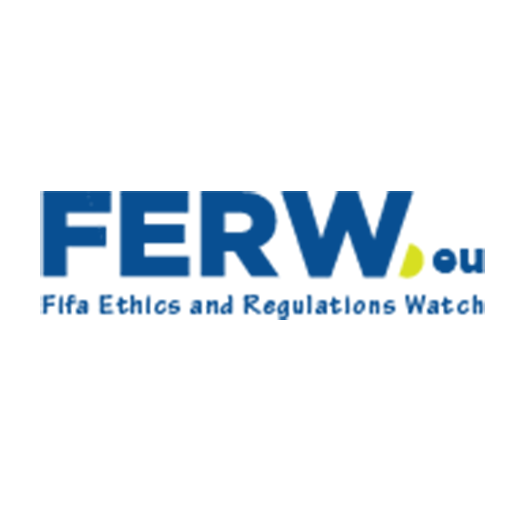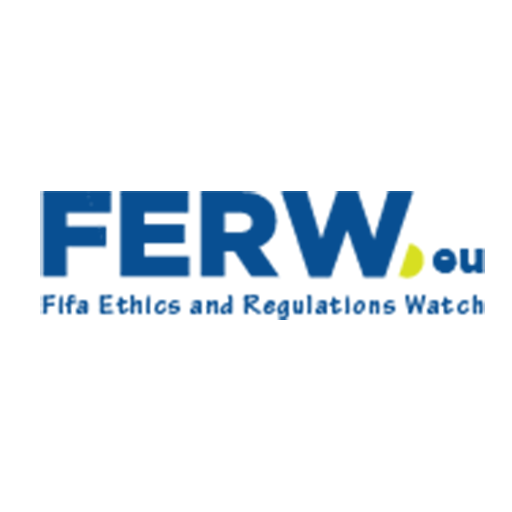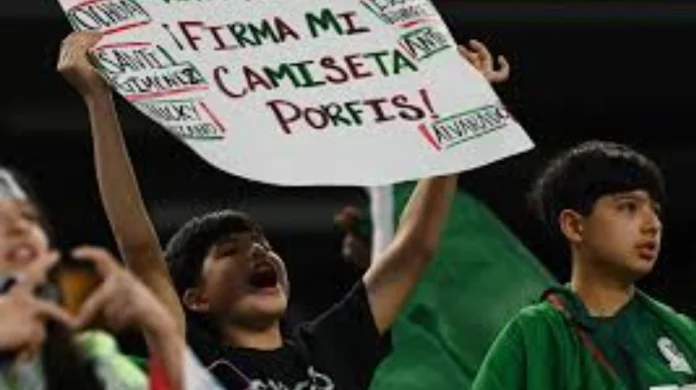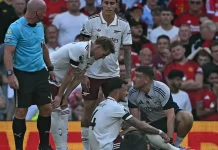Mega sporting events involve diverse population size, crowds and mass media attention hence providing a perfect environment that unfortunately favors the chances of children being exploited and harmed. The potential hazards are sexual abuse, trafficking, labor exploitation, harassment, and neglectedness. Human rights groups and youth activists have reported unsafe boundaries beyond the sports arenas across the world due to absence of supervision, proper reporting mechanisms, training of staff among other gaps. These risks are usually increased because of the participating external pressures caused by security overload, temporary populations, and the economic motives involved in such events.
The world cup 2026 which will run through three different countries and 16 host cities intensifies such challenges exponentially by increasing logistical nightmares and jurisdictional variances. There is no central, non-opaque child protection structure, which means the threat of events and immunity increases. This fact sharply contrasts with the human rights strategy introduced by FIFA in 2018 that still guarantees the focus on child protection, where the latter is far from being delivered and the end of 2025 draws near.
Absence of a comprehensive safeguarding policy
Although FIFA has implemented a global programme, known as the FIFA Guardians, to establish the standards of child protection, and direct the prevention strategies across the member associations, a similar programme has not been converted into a legal binding and comprehensive policy regarding the host cities of the World Cup in 2026. FIFA Guardians is directed at creating safe cultures where there are proper guidelines on how the staff are to work, what to report, and training although the programme is still an informational resource, instead of a mandatory requirement where accountability and monitoring are in place.
Critics then place the rhetoric of global safeguarding put out by FIFA in stark contrast with the on-the-ground measures to protect the children that specifically apply to the 2026 event. It covers all the youth who will take part, volunteers, fans and marginalized children in host communities and the risk is disproportionately spread. The deficiency of openly declared, public safeguarding principles and check frameworks’ ventilations sparks concern around responsibility and implementation, above all, considering the size and profile of the World Cup.
The shortcomings of current safeguarding measures
FIFA Guardians, which was created to encourage child safeguarding in football worldwide, thus offers valuable direction on five fundamental child safeguarding principles, namely the best interests of the child, non-discrimination, participation, protection against abuse and exploitation, and the development of the child. The programme has a wide range of educational tools to be used including the FIFA Guardians Guide, interactive courses that target player agents, coaches, and administrators with the intention of instilling the best practices in the protection.
Nevertheless, it has been not equally and importantly, FIFA Guardians is not compulsory to all World Cup personnel, volunteers, or organizers in the host cities with specific supervision and penalty of non-observance. There is no comprehensive child safeguarding policy specifically designed to meet the realities of the organizational needs of the World Cup, which leads to a lack of adequate proactive risk management approach, lack of uniform training, and lack of access to identify and report victims. No systematic risk assessment has been published publicly to cover the cross-border, multicultural complexity of the event.
According to the proponents, placing the process of safeguarding children in one decentralized approach in three nations with different legislations and enforcement systems is an invitation to negligence and leaves plenty of children exposed. Inconsistent clarity of timeline and reporting on the implementation of the safeguarding policy adds to the concerns, not least that, to date, the FIFA organization has made no efforts to ensure regular reporting to the public regarding its implementation of the safeguarding policy.
Youth voices and activist pressure
Domestic and global sport youth lobby groups, many of whom have first-hand accounts of unsafe sporting settings to their name, have increasingly pressured FIFA to start paying attention to these safeguarding gaps. Nongovernment organizations, like the Equality League Youth Council have emphasized that pledges without standards that can be enforced, have left children at risk of sharing, and that FIFA is not doing enough given the magnitude and stakes of the 2026 World Cup.
They vocalize their demands around mandated safeguarding training, effective reporting and investigation mechanisms, participatory powers of children in their policy-making development, and allocations needed to prevent, and respond to, cases of child abuse. Human rights activists have backed up the testimonies of youth advocates, pointing at high levels of bullying, harassment and no-protective frameworks in the sports environments. This intense pressure puts the spotlight on the responsibility and ethical duty of FIFA as the custodian of one of the greatest sporting platforms in the world.
Broader implications for child rights in global sports
All over the world, mega-sporting events have necessitated the application of comprehensive child protection policy that understands the increased vulnerabilities occasioned by scale, mobility and market of multi stakeholders. The need to implement strict and standardised protocols incorporating prevention, protection, child participation, and a strong accountability are emphasised in UNICEF International and Centre for Sport and Human Rights standards.
The World Cup in 2026 offers an unprecedented chance to FIFA as world football governing body, to establish a world standard, by designing and executing a transparent child safeguarding policy that can be enforced with the help of specific resources and monitoring with clear repercussions in case of any violation. Its inability in this aspect not only chips away at the rights of children but also undercuts the confidence of people in the governing institutions of football and the future of the sport in regard to social responsibility.
Legal, ethical, and reputational risks
The inability of FIFA to develop a robust child safeguarding policy framework in the 2026 event might have legal and reputational problems. As awareness and international human rights organizations, the media and civil society rise and critically examine this issue, FIFA might suffer a wave of adverse publicity and pressure that might form a barrier to sponsorship, partnerships, and fandom.
Moreover, without enforceable child protection measures, incidents of abuse could lead to legal liabilities for FIFA and host cities under national and international laws. Proactively safeguarding children is not only a moral imperative but a strategic necessity for risk mitigation and ethical governance in global sports.
This person involved in youth advocacy in sports has spoken publicly on the urgent need for FIFA to close the child safeguarding gaps before the 2026 World Cup and to engage with children and communities meaningfully in these efforts.
With the #ClubWorldCup about to launch in the US and @FIFAWorldCup one year away, why has @FIFAcom not published a Child Safeguarding policy for these mega-events that will attract millions?
Risks are:
⚽️trafficking,
⚽️sexual exploitation,
⚽️child laborhttps://t.co/fHgpz6izW6 pic.twitter.com/5Nulm21ZSy— Minky Worden (@MinkysHighjinks) April 23, 2025
Charting a way forward for FIFA and host cities
The child safety complexities raised by the 2026 World Cup require FIFA to formulate and execute an elaborate child safeguarding policy immediately to influence all host cities in addition to all the stakeholders of the event. The steps to be undertaken in this policy should include compulsory training of the staff including the volunteers, the centralized systems of the abuse reporting and investigations, child-friendly procedures of the complaints and independent checking.
Involving children directly in policy formulation and implementation is very important so that the policies can assist children to tackle their realities on the ground. The responsiveness and coverage may also be enhanced by inter-agency cooperation between host countries and organisations as well as experts in child protection.
Leveraging existing frameworks and resources
FIFA has a platform to develop its present FIFA Guardians system into a well-resourced standardised system that approaches the 2026 level of World Cup that is compulsory and has clear standards and enforcement. Transparency reports and communication with the wider public about the safeguarding work would increase accountability and stakeholder trust, too.
Putting the measures in place to help align the event with international best practice in children’s rights and sports safety will ensure the 2026 event sets an example of best practice to future mega-sporting events and is a significant step towards protecting at-risk children the world over.
The need to act is obvious: protecting the children at mega-sporting events such as the FIFA World Cup categorically demands promptness, depth of policy together with substantive support. Without them the potential of sport as a positive and inclusive influence is threatened by avoidable hurt.
With the 2026 FIFA World Cup drawing near, the world holds its breath as FIFA, in the course of showing it might to such an issue, will become a groundbreaking example of how deemed children in sports should be treated.












